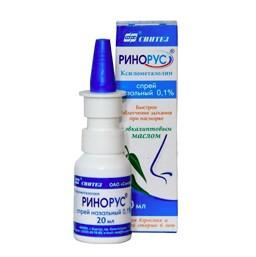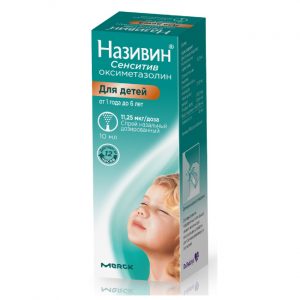Description
Latin name
Acid acetylsalicylic
Release form
Tablets.
packaging 10 pcs
Pharmacological action
It has anti-inflammatory, analgesic and antipyretic effects associated with the suppression of cyclooxygenase 1 and 2, regulating the synthesis of prostaglandins. Reduces aggregation, platelet adhesion and thrombosis by inhibiting the synthesis of thromboxane A2 in platelets. The anti-aggregation effect persists for 7 days after a single dose (more pronounced in men than in women).
Indications
Moderate or mild pain in adults of various origins (headache, toothache, migraine, neuralgia, arthralgia, muscle pain, pain during menstruation).
Elevated body temperature in colds and other infectious and inflammatory diseases (in adults and children over 15 years of age).
Contraindications
– Hypersensitivity to acetylsalicylic acid and other NSAIDs
– erosive and ulcerative lesions (in the exacerbation phase) of the gastrointestinal tract
– severe liver or kidney dysfunction
– “hemorrhagic disease Von Willebrand, telangiectasia, hypoprothrombinemia, thrombocytopenia, thrombocytopenic purpura)
– stratified aortic aneurysm
– portal hypertension, vitamin K deficiency
– glucose-6-phosphate dehydrogenase deficiency
– pregnancy (I and III trimester), breastfeeding period.
– The drug is not prescribed as an antipyretic to children under 15 years old with acute respiratory infections caused by viral infections, because of the risk of Reye’s syndrome (encephalopathy and acute fatty liver with acute development of liver failure).
Precautions hyperuricemia, urate nephrolithiasis, gout, peptic ulcer and / or duodenal ulcer (history), decompensated heart failure.
Use during pregnancy and lactation
Contraindicated for use in I and III trimesters of pregnancy. In the II trimester of pregnancy, a single admission is possible according to strict indications.
It has a teratogenic effect: when used in the first trimester, it leads to the development of splitting of the upper palate, in the third trimester it causes inhibition of labor activity (inhibition of prostaglandin synthesis), premature closure of the ductus arteriosus in the fetus, pulmonary vascular hyperplasia and hypertension in the pulmonary circulation.
Acetylsalicylic acid is excreted in breast milk, which increases the risk of bleeding in a child due to impaired platelet function, therefore, mother should not use acetylsalicylic acid during lactation.
Active substance: acetylsalicylic acid, max. 0.2 g or 0.2 g citric acid.
Dosage and administration of
In case of mild to moderate intensity pain and fever, the single dose is 0.5-1 g, the maximum single dose is 1 g, the maximum daily dose should not exceed 3 g. The intervals between doses should not be less than 4 hours. To reduce the irritating effect on the gastrointestinal tract, the drug should be taken after meals, washed down with water, milk, alkaline mineral water.
The duration of treatment (without consulting a doctor) should not exceed 7 days when prescribed as an anesthetic and more than 3 days as an antipyretic.
Side effects of the digestive system: nausea, vomiting, anorexia, epigastric pain, diarrhea rarely – the occurrence of erosive and ulcerative lesions, bleeding from the gastrointestinal tract, impaired liver function.
From the side of the central nervous system: with prolonged use, dizziness, headache, reversible visual impairment, tinnitus, aseptic meningitis are possible.
From the hemopoietic system: rarely – thrombocytopenia, anemia.
From the blood coagulation system: rarely – hemorrhagic syndrome, prolonged bleeding time.
From the urinary system: rarely – impaired renal function with prolonged use – acute renal failure, nephrotic syndrome.
Allergic reactions: rarely – skin rash, Quincke’s edema, bronchospasm, aspirin triad (a combination of bronchial asthma, recurrent polyposis of the nose and paranasal sinuses and intolerance to acetylsalicylic acid and pyrazolone drugs).
Other: in some cases – Reye’s syndrome with prolonged use – increased symptoms of chronic heart failure.
Drug Interaction
When used simultaneously, antacids containing magnesium and / or aluminum hydroxide slow down and reduce the absorption of acetylsalicylic acid.
The simultaneous use of calcium channel blockers, agents that limit calcium intake or increase the excretion of calcium from the body, increases the risk of bleeding.
When used with acetylsalicylic acid, the effect of heparin and indirect anticoagulants, hypoglycemic agents, sulfonylureas, insulins, methotrexate, phenytoin, valproic acid is enhanced.
When used with ACS, the risk of ulcerogenic action and gastrointestinal bleeding is increased.
When used simultaneously, the effectiveness of diuretics (spironolactone, furosemide) is reduced.
When used with other NSAIDs, the risk of side effects is increased. Acetylsalicylic acid can reduce the plasma concentrations of indomethacin, piroxicam.
Acetylsalicylic acid may induce liver damage when used with gold preparations.
When used simultaneously, the effectiveness of uricosuric agents (including probenecid, sulfinpyrazone, benzbromarone) is reduced.
Severe oesophagitis may develop with acetylsalicylic acid and sodium alendronate.
Acetylsalicylic acid absorption may be impaired with the use of griseofulvin.
A case of spontaneous hemorrhage into the iris of a ginkgo biloba extract has been described on the background of prolonged use of acetylsalicylic acid at a dose of 325 mg / day. It is believed that this may be due to an additive inhibitory effect on platelet aggregation.
Increased plasma salicylate Cmax and AUC may occur with concomitant administration of dipyridamole.
Concentrations of digoxin, barbiturates and lithium salts in blood plasma are increased when co-administered with acetylsalicylic acid.
Toxicity with salicylates is possible with the use of salicylates at high doses with carbonic anhydrase inhibitors.
Acetylsalicylic acid at doses of less than 300 mg / day has little effect on the efficacy of captopril and enalapril. The use of acetylsalicylic acid in high doses may reduce the effectiveness of captopril and enalapril.
When used concurrently, caffeine increases the rate of absorption, the plasma concentration and the bioavailability of acetylsalicylic acid.
When used concomitantly with metoprolol, it can increase Salma Cmax in blood plasma.
With the use of pentazocine on the background of long-term administration of acetylsalicylic acid in high doses, there is a risk of severe adverse reactions from the kidneys.
When co-administered with phenylbutazone, it reduces the uricosuria caused by acetylsalicylic acid.
Ethanol may increase the effect of acetylsalicylic acid on the gastrointestinal tract when used simultaneously.
Overdose
Symptoms (single dose less than 150 mg / kg – acute poisoning is considered mild, 150-300 mg / kg – moderate, more than 300 mg / kg – severe): salicylic syndrome (nausea, vomiting, tinnitus, visual impairment, dizziness, severe headache, general malaise, fever – poor prognostic sign in adults). Severe poisoning – hyperventilation of the lungs of central genesis, respiratory alkalosis, metabolic acidosis, confused consciousness, drowsiness, collapse, convulsions, anuria, bleeding. Initially, central hyperventilation of the lungs leads to respiratory alkalosis – shortness of breath, asphyxiation, cyanosis, cold sticky sweat with increased intoxication increases respiratory paralysis and the separation of oxidative phosphorylation causing respiratory acidosis.
In chronic overdose, plasma concentrations are poorly correlated with the severity of intoxication. The greatest risk of developing chronic intoxication is observed in elderly persons with intake for several days more than 100 mg / kg / day. In children and elderly patients, the initial signs of salicylicism are not always noticeable, so it is advisable to periodically determine the concentration of salicylates in the blood: a level above 70 mg% indicates moderate or severe poisoning above 100 mg% – extremely severe, prognostically unfavorable. At moderate poisoning, hospitalization for 24 hours is required. Treatment: provocation of vomiting, appointment of activated carbon and laxatives, constant monitoring of CBS and electrolyte balance depending on the state of metabolism – introduction of sodium bicarbonate, sodium citrate solution or sodium lactate. Increasing the reserve alkalinity increases the elimination of ASA by alkaline urination. Urine alkalinity is indicated at salicylate levels above 40 mg% and is provided by infusion of sodium bicarbonate (88 mEq in 1 l of 5% dextrose solution, at a rate of 10-15 ml / h / kg) the recovery of BCC and the induction of diuresis are achieved by the introduction of sodium bicarbonate in the same doses and dilution, which is repeated 2-3 times. Caution should be exercised in elderly patients whose intense fluid infusion may lead to pulmonary edema. Acetazolamide is not recommended for alkaline urination (may cause acidemia and enhance the toxic effect of salicylates). Hemodialysis is indicated with salicylate levels greater than 100-130 mg%, in patients with chronic poisoning – 40 mg% and below in the presence of indications (refractory acidosis, progressive deterioration of the condition, severe CNS lesion, pulmonary edema and renal failure). In the case of pulmonary edema, IVL is a mixture enriched with oxygen.
Storage conditions
In a dry place, at a temperature not exceeding 25 ° C.
Expiration
48 months
Deystvuyuschee substances
Atsetylsalytsylovaya acid
Outgoing conditions from pharmacy s17lfpf8fd8l4 pharmacy
ka
pharmacy without a prescription
dosage form
dosage form
tablets



